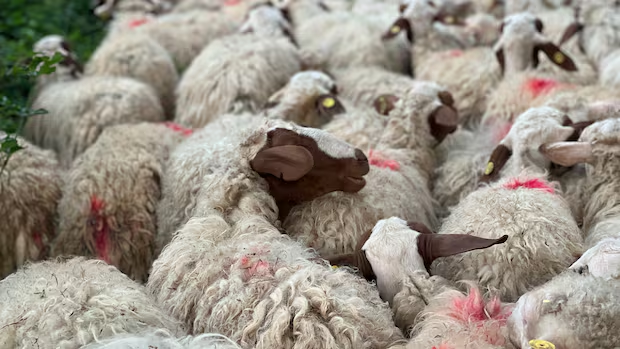On a windy autumn day, the gently rolling hills outside Rome set the stage for an unlikely gathering. Wool producers, designers, activists and even model, actor and farmer Isabella Rossellini and her daughter came together at the farm of Ilaria Venturini Fendi — not to celebrate fashion’s top tier, but to rethink it entirely.
“It’s tough producing wool in Italy,” said Fendi, who keeps 600 sheep at her agriturismo, or working guest farm, on the outskirts of the capital. “It’s become a waste product. You can’t do the whole chain anymore. We need to change ideas — to start reshaping economies.”
Across Europe and North America, the picture is bleak: wool — a water- and fire-resistant biodegradable fibre that naturally regulates body temperature — is often burned or discarded because processing costs outweigh returns.
That’s why Fendi was hosting the first in-person World Hope Forum, a network committed to proving that wool production can be local, ethical and circular.
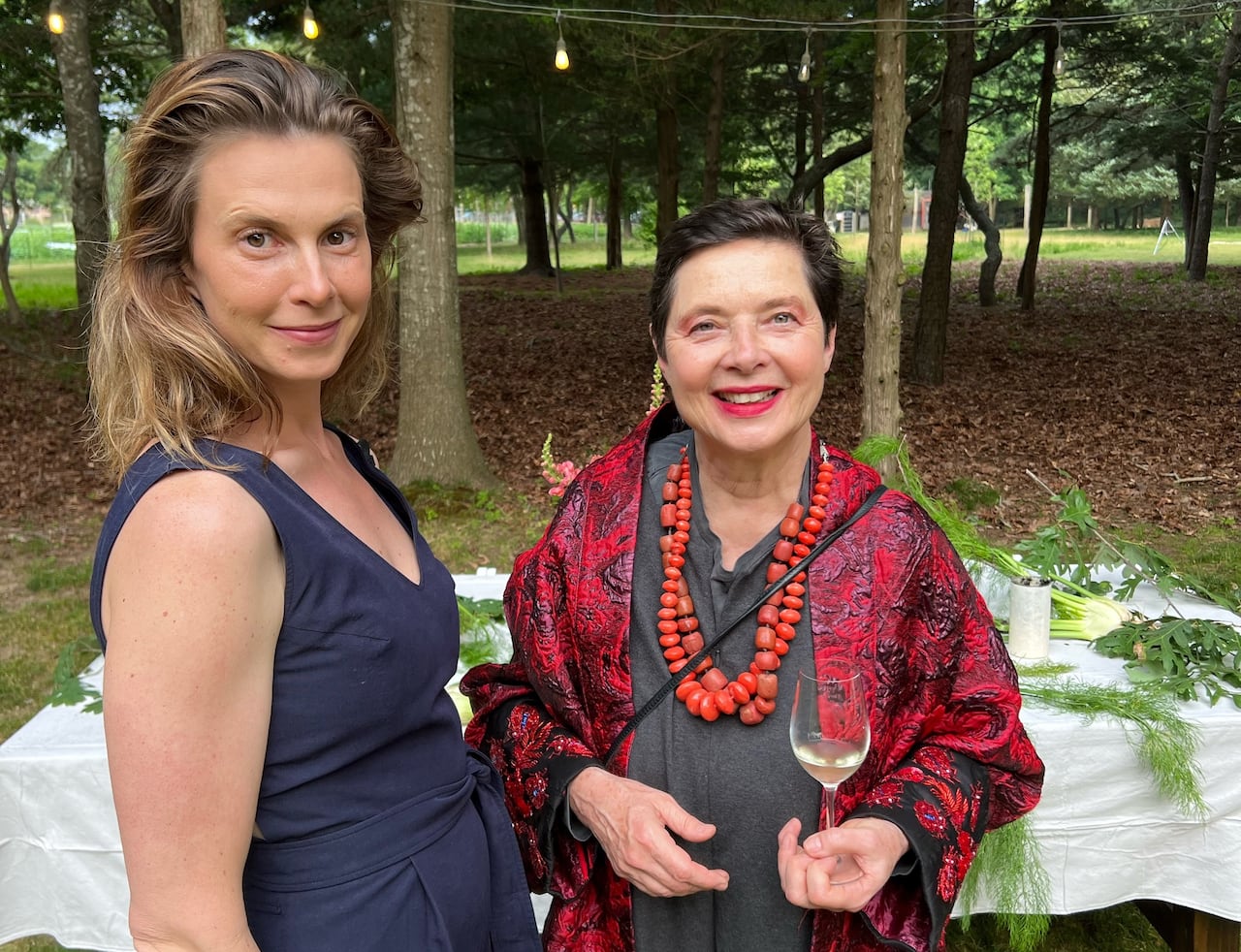
From waste to worth
Fendi knows luxury from the inside out. The youngest daughter of the famed Italian fashion family, she left the company years ago to found Carmina Campus — “the singing fields” — a label built on reuse and regeneration.
The gathering comes just months before the launch of the UN’s International Year of Rangelands and Pastoralists, in 2026, underscoring the urgency of protecting traditional herding cultures and natural fibres — and a month ahead of the first meeting of the EU Focus Group on innovative and sustainable ways to help farmers revitalizing the European wool value chain.
Among the experts present was Blátnaid Gallagher, founder of Ireland’s Galway Wool Co-op, which is reviving native Irish wool — nearly erased by cheaper Asian imports often sold as Irish — and has won an EU award for strengthening rural communities. Gallagher’s goal at the EU is to push for clearer fibre origin regulations across Europe.
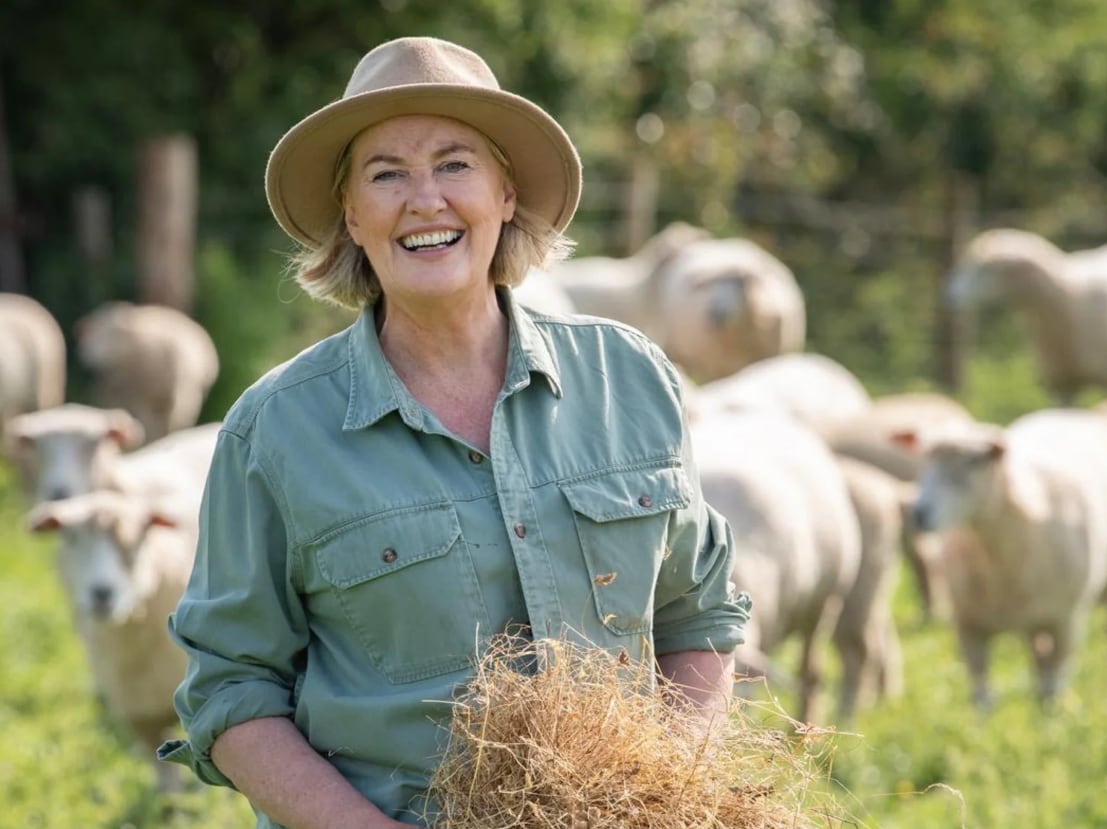
“We’re hoping the EU will give the consumer the chance to know where fibre actually grows,” Gallagher said. “Then maybe we can reduce our dependency on the monoculture of wool from China that ends up in heritage products across Europe and better support farmers.”
Her optimism is shared by Netherlands-based Canadian designer Cynthia Hathaway who’s been campaigning to bring attention to Europe’s shepherding cultures.
Through her Wool March — part protest, part pilgrimage — she leads “soft mob walks” with sheep into cities, a form of slow activism to highlight the ecological and cultural value of wool.
“Transhumance — the seasonal migration of flocks — is one of the oldest climate solutions we have,” said Hathaway. Her next walk, planned for early 2026, will span several days ending in Brussels where EU policy discussions on pastoralists and sustainable fibre production will be underway.
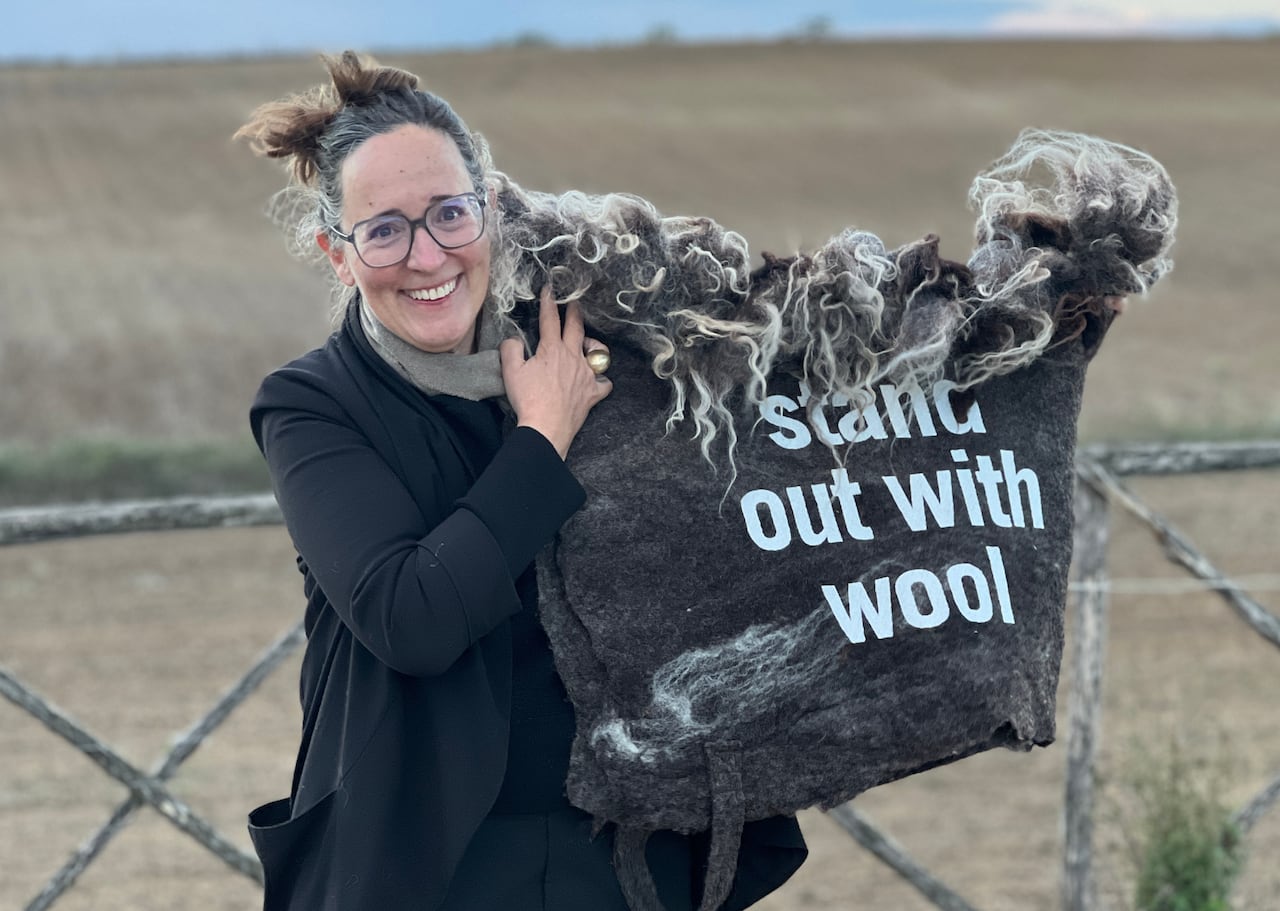
Gallagher says she believes the world is on the cusp of a return to natural fibres — but she and others here warn that more protections are needed for producers and animals.
Today, less than one per cent of global textile fibres come from wool. The decline has meant local wool processing operations in Europe and North America have all but disappeared.
Mass production of wool in China, Australia and other countries has pushed global prices down, forcing European and North American mills to close and leaving small producers unable to compete.
“Farmers get five cents a kilo,” said Reina Ovinge, who left fast fashion after 30 years to start the Knit Wit Stable in the Netherlands. “In the 1980s, it was 25 euros. Half of Europe’s wool is unused or underdeveloped.
Ovinge’s answer has been to build her own micro-supply chain: shearing and sorting on the farm, then sending the wool to be scoured, spun and dyed, often in Biella — Italy’s centuries-old wool hub — before bringing the yarn home for knitting.
The process runs on community effort and patience, she says, with individual orders taking around four to five weeks.
“That’s how it used to be,” she said. “That’s how we slow down.”
‘Slowdown’ money needed over startup investment
Isabella Rossellini and her daughter, Elettra Wiedemann, run the 28-acre Mama Farm in Brookhaven, N.Y. Opened more than a decade ago, it is now home to endangered heritage sheep and chickens and promotes biodiversity through organic heirloom vegetable cultivation.
Alongside cooking classes, knitting circles and nature crafting sessions, one initiative is Farm to Fashion, a program that pairs young designers with the farm’s heritage wool to create one-of-a-kind sweaters.
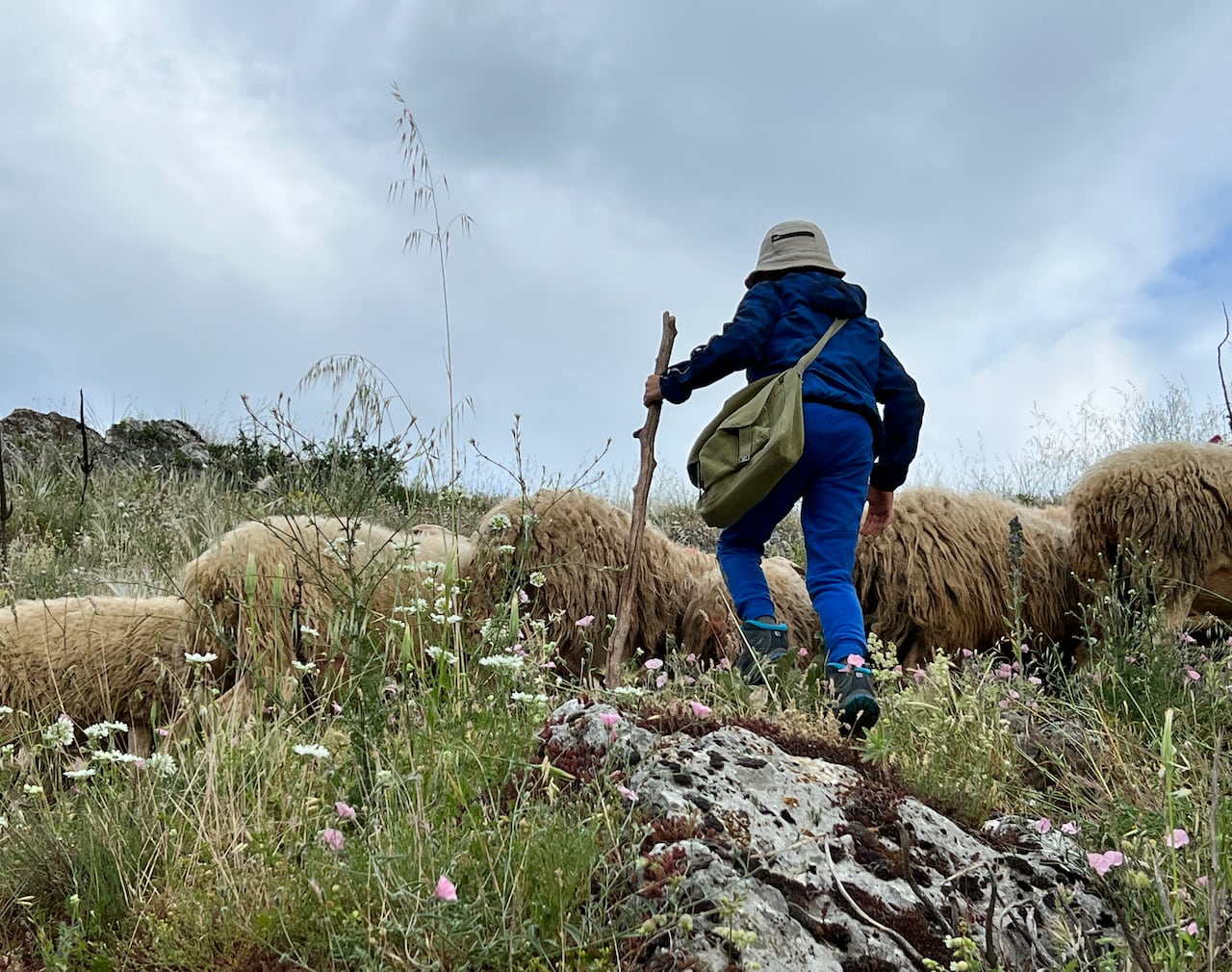
“It’s the same with the farm-to-table movement. People got really invested in that movement because they realized when they bought a cucumber: I’m supporting a farm or conserved land and beauty,” said Wiedemann. “All things that help a community grow.”
Wiedemann says one of her proudest achievements is getting the term “farm to fashion” into Vogue and Women’s Wear Daily, where young designers will see it.
Still, says Rossellini, without lower processing costs and public-private partnership to support producers, Farm to Fashion items can only remain a small-scale enterprise.
“If you’re very successful and have an order for 30,000 sweaters, you won’t be able to meet it using organic wool. It’s a slow process,” said Rossellini.
Designer Philip Fimmano, who organized the World Hope Forum event with Dutch future forecaster Li Edelkoort, emphasizes the need for patient, long-term investment in initiatives like this.
“Instead of startup money, we need slowdown money,” he said.
Circular by design
Yet there are some wool producers scaling up sustainably, albeit not with virgin wool.
Matteo Mantellassi, CEO of Manteco, the mill founded by his grandfather in 1943 in Prato, central Italy, believes recycled wool can rival the finest virgin fibres.
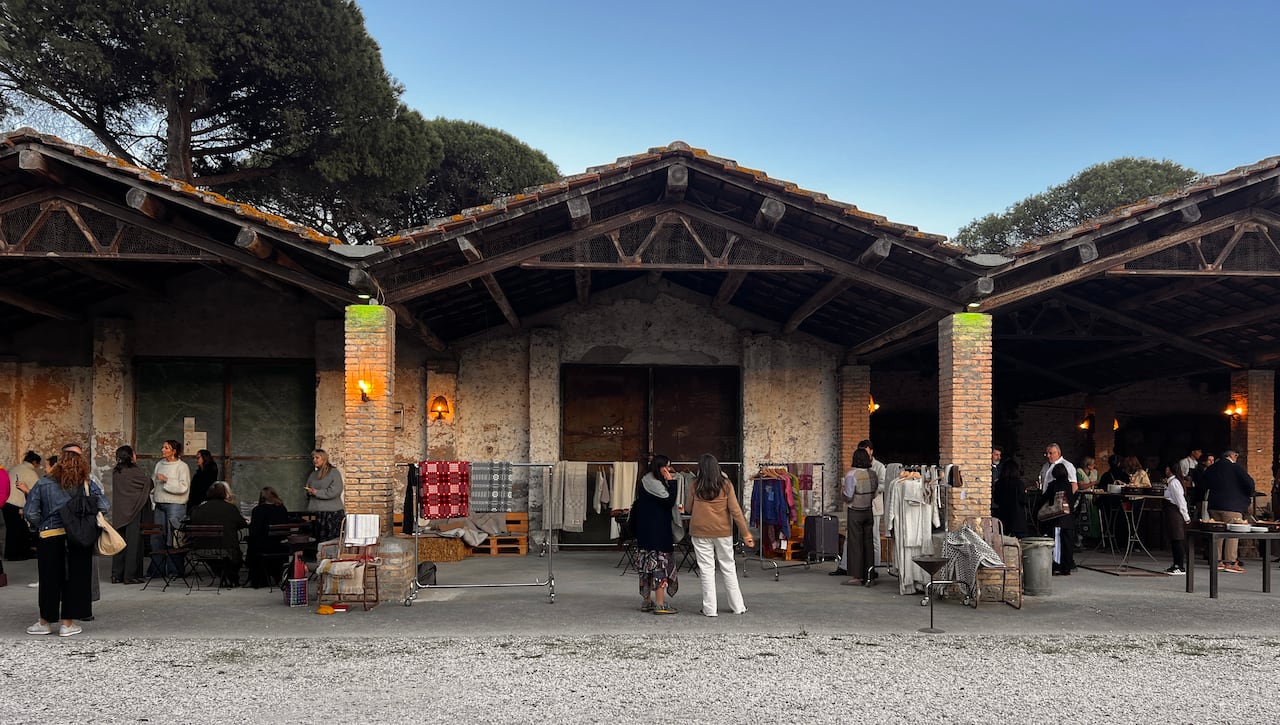
His company’s MWool is made from carefully selected post-consumer garments, sorted by colour and remixed without the use of dyes or added water, in order to be both traceable and circular. According to the company, MWool generates 65.6 per cent less CO2 emission than virgin wool, while ReviWool — a fibre recovered from the combing process of virgin wool — cuts emissions by up to 99.2 per cent, using far less water and energy.
“Until about 20 years ago, recycled wool was seen as cheap,” Mantellassi said. “Now it’s beautiful — and it saves energy, water and chemicals.”
Last year, Manteco processed 68,000 kilograms of offcuts from garment producers, winning the Climate Project of the Year award. He’s begun working with the European Parliament on sustainable textile policy, advocating for a carbon tax on products with a large carbon and environmental footprint to increase their price.
“We need to educate young designers,” Mantellassi said. “They don’t always know what fabrics can be used for what. We have to bring knowledge back to the start of the chain.”
Source link




